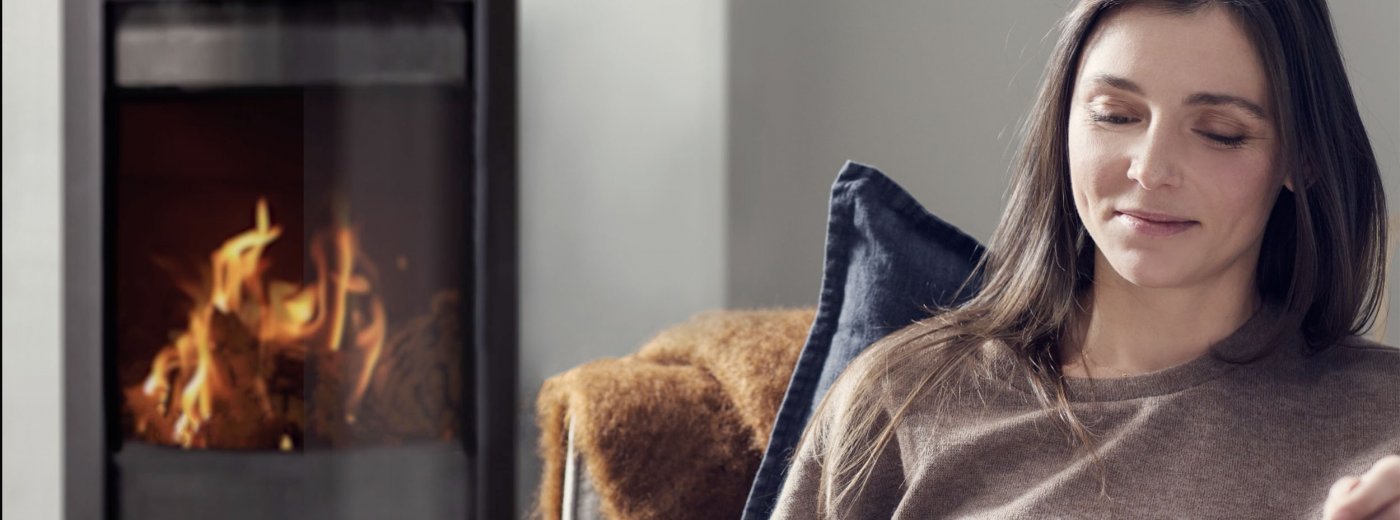The ultimate wood burning stove guide
The perfect guide to help you get the best out of your wood burning stove.
The perfect guide to help you get the best out of your wood burning stove.
With an abundance of different styles on the market, it is difficult to figure out which wood burning stove is best for your home. After reaching that decision, what can be equalling challenging is the process of taking care of your wood burning stove. To make it easy, we’ve created the perfect guide for your to follow.
While all woods burn better when seasoned, typically, the best woods for burning in your wood stove are the ones you come across frequently.
Want to take a closer look at the different types of wood? Check our our guide for information about different types of firewood.
Another method to check if your wood is ready to burn is to check the colour, as any green colour underneath the bark signifies the logs are not dry enough yet. Check the weight and density by beating 2 logs together, and if they make a hollow sound it is ready. Remember, to leave spaces of air between your logs as this will aid the drying process.
Do you want more tips on how to dry wood properly? Take a look at our guide on how to dry firewood.
Air the wood
Ensure that all air vents in the stove are open. Put the logs on the bottom of the fireplace. It is important that the wood is cleft and dry.

Kindling wood
Add a layer of small logs of about 4 cm, and then one or two layers of kindling. Remember that air is important – approx. 1 cm between the pieces of wood is the perfect spacing.

Fire briquettes
Put a couple of firelighters on top of the layer of kindling wood or use some newspaper. Be aware that newspaper produces unnecessary amounts of ashes and contributes to more soot.

Light it!
The last step is easy, just light it and close the door! Some chimneys take more time to create good draught than others. If the draught is insufficient, it might be an idea to open the door to the wood stove slightly until it is properly burning.

All of Jøtul's products are made with an air-wash system which helps you keep the glass front and or side windows clean during burning. If soot covers the glass, it is normally enough to burn intensely for a short period of time and the heat and the air-wash system will make sure that soot particles attached to the glass are burnt off.
If the glass is still covered with soot, we recommend you moisten a wrinkled piece of newspaper and dip it carefully in the ashes on the bottom of the wood stove. Rub the paper against the glass with the ashes turned towards the glass. Repeat more times if necessary.

A lot of people clean out the ashes too frequently. In fact, it is beneficial to leave a layer of ashes on the bottom of the fireplace. This layer insulates and protects the bottom and the floor underneath from the burning heat of the fire.
At least once a year, Jøtul recommends that you remove the baffle plate and burn plates to make sure that they are in good shape. Also, check the riddling grate and bottom burn plate for damage. Brush off soot particles from these and the rest of the burn chamber.
Sweep your chimney at least once every year and preferably at the start and the end of the heating season. A clean fireplace and a clean chimney is important to achieve an environmental combustion and avoid a soot fire that can damage the chimney and helps prevent wide-spread fire.
Ask your nearest Jøtul-dealer, and they will guide you through how you can keep your stove clean.
